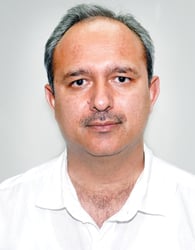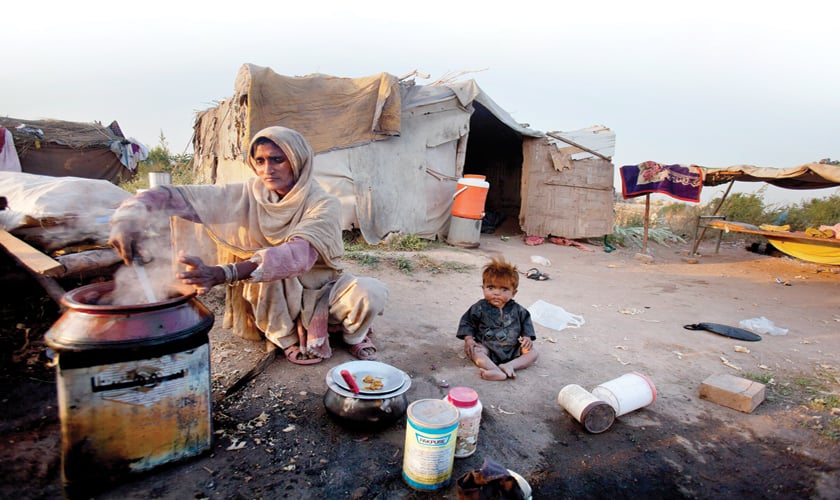INSIGHT
It has not come as a surprise for those following the developments related to the economy of Pakistan that the whole of the country’s Public Sector Development Programme (PSDP) for fiscal year 2016-17 would be financed by borrowed money. ‘Borrowed development’, so to say!
 The size of PSDP for the coming fiscal is estimated at Rs800 billion. During the same period, the country would be taking foreign loans alone of almost the same amount, ie, Rs796.7 billion. The track record shows that the loan targets are usually exceeded. For the outgoing fiscal for instance, foreign loans were estimated at Rs727.5 billion. Revised estimates for FY 2015-16 are that these would amount to Rs821 billion, as the year comes to a close on June 30.
The size of PSDP for the coming fiscal is estimated at Rs800 billion. During the same period, the country would be taking foreign loans alone of almost the same amount, ie, Rs796.7 billion. The track record shows that the loan targets are usually exceeded. For the outgoing fiscal for instance, foreign loans were estimated at Rs727.5 billion. Revised estimates for FY 2015-16 are that these would amount to Rs821 billion, as the year comes to a close on June 30.
It would not be a surprise if by the close of the coming fiscal, the foreign loans actually go much higher and by contrast, actual development spending is cut down by a wide margin. For the outgoing fiscal, PSDP’s size has been slashed from Rs700 billion to Rs661 billion, in the revised estimates, the budget documents for FY 2016-17 reveal. This usually happens almost every year that the amount actually spent is less than what is allocated for developmental projects.
And we are talking of foreign loans only, so far. Domestic bank borrowing is on top of it, another dark spot in the federal budget formulation, in Pakistan. It stands at Rs198.8 billion for the outgoing financial year – thankfully, less than the original estimate of Rs282.9 billion – but is estimated at a whooping Rs452.9 billion for the year ahead. Massive increase, indeed.
The thought that development spending – particularly on social services – is marred by ‘high’ defence spending has dominated the discourse on development in Pakistan, for long. Situation has changed, considerably. Figures for the past several years tell us that debt servicing eats up considerably more than defence, out of the financial resources at the disposal of the country’s economic managers, domestically raised and borrowed from abroad, put together.
Figures for two financial years – 2015-16 and 2016-17 – make the country’s financial picture crystal clear, vis-à-vis this peculiar aspect. We are spending Rs1,633 billion on servicing of domestic and foreign debt, in 2015-16. In the same period, defence spending is seen standing at Rs775.8 billion, less than half of what is being spent on debt servicing. What is more important is to note that while defence spending decreased by more than Rs5 billion as against the initial estimates of Rs781 billion, debt servicing increased by Rs37 billion as against initial estimates of Rs1,596 billion, in the revised estimates for FY16.
The scenario for FY17 seems even more precarious; debt servicing cutting a lion’s share of Rs1,803.8 billion, while defence gets Rs860 billion, much less than half of the unpleasant cost of living on borrowed money.
It may be pointed out here that public debt has already reached alarming levels, as it increased to Rs19,168 billion on March 31, 2016 out of which more than $55 billion is foreign public debt. Total external debt and liabilities (EDL) stand at $69.6 billion. The incumbent government added Rs1,787 billion in domestic public debt in the first nine months of the outgoing fiscal year. Rs588 billion of this increase may be attributed to borrowing from foreign resources. This indeed is a mammoth increase, clearly indicating that there is no letup in this unhealthy, risky trend of economic management.
Instead, Economic Survey of Pakistan finds refuge in telling the people that the ratio of debt maturing in one year’s time decreased to 47 percent at the end of 2014-15, as against 64 percent at the end of 2012-13. The document does not tell us as to what is the situation at the end of 2015-16.
Let us see it from another angle now! Debt serving and defence, put together at Rs2,663 billion, will consume 70 percent of the country’s total current expenditure in fiscal year 2017. This will be three-fourth of the total revenues targeted to be collected by the Federal Board of Revenue (FBR), in the same fiscal year. It is not hard to calculate what is left for running of the government, what to talk about taking the country up on the development ladder.
An overwhelming share of what we spend on debt every year is consumed only in getting rid of mark-up on the very debt, not the debt itself. Up to Rs1,315 billion went into mark-up payment during 2015-16, out of which a whopping Rs1,196.6 billion were the mark-up only on domestic debt. For 2016-17, Rs1,360 billion are earmarked for mark-up payment – out of the total of Rs1,803 billion mentioned above – Rs1,247 billion has been set-aside for payment of mark-up on domestic loans. Actual repayment of foreign loans was Rs318 billion in 2015-16 and Rs443.8 billion has been allocated to retire foreign debt during 2016-17. It is clear that we are adding much more to the burden of our future generations than we are retiring.
A cut of Rs120 billion has been made on the total national development spending, as a whole, for FY16. In the same period, total current expenditure has risen by almost the equivalent amount, Rs 117 billion. Key federal ministries failed drastically in spending their developmental allocations. Ministry of Planning, Development and Reform was able to spend less than Rs2 billion out of Rs14 billion allocated for it. Railways’ ministry fell short by Rs15 billion, spending Rs26 billion out of Rs41 billion. Special Federal Development Programme of Rs28 billion remained unspent. Not hard to imagine where the money was channelled to. What kind of development can one perceive in such a situation?
 That is not the whole story about the development expenditure. The Rs800 billion of PSDP include Rs100 billion for ‘Special Development Programme for Temporarily Displaced Persons (TDP) and Security Enhancement’. Exactly the same amount was allocated in this year for the outgoing financial year; actual spending being only half of it. One question is how can one label the rehabilitation of operation affected people as ‘development’, the other question is what actually was the hindrance in the way of consuming half of the allocated amount for the year coming to an end on June 30? Security and development are displaying interplay here.
That is not the whole story about the development expenditure. The Rs800 billion of PSDP include Rs100 billion for ‘Special Development Programme for Temporarily Displaced Persons (TDP) and Security Enhancement’. Exactly the same amount was allocated in this year for the outgoing financial year; actual spending being only half of it. One question is how can one label the rehabilitation of operation affected people as ‘development’, the other question is what actually was the hindrance in the way of consuming half of the allocated amount for the year coming to an end on June 30? Security and development are displaying interplay here.
On a closer examination one can have an idea that some of the development allocations are regularly used by the economic managers as a cushion for adjustments, to arrive at certain totals of expenditure, and to ‘achieve’ the fiscal deficit targets.
The point here is not to ‘defend’ the defence spending. No sane mind would advocate irrational spending in any head. However, it is also a hard reality that other countries in the region – particularly India – have increased their debt spending substantially higher than Pakistan, which further complicates the peculiar security setting of the region. Hence, a corresponding, if not matching, increase on our side.
The point, nonetheless, is to emphasise here that while defence spending has linkages with overall regional situation – and so here it is to stay – we need potent strategies to do away with our national habit of living on borrowed bucks. As far as the fact of less than required resources being available for development spending is concerned, debt is much bigger a reason than defence, in the prevailing circumstances.
Some experts have pointed out that by 2019-2020, Pakistan may find itself entangled in a serious debt trap if the ongoing trends sustain, but the official account remains that the country’s debt payment capability remains in the comfortable zone.
This is Pakistan’s ‘3D tri-lemma.’ We have to get rid of it, in addition to finding ways to enhance the efficiency of whatever we allocate for, and spend on, development. The road to this desired scenario lies ahead in raising the domestic resources, ie, revenues corresponding to the true potential of the national economy and its gross domestic product (GDP). Otherwise, we would continue to remain caught in this dangerous state of affairs.
The writer works with the Institute of Policy Studies,
Islamabad